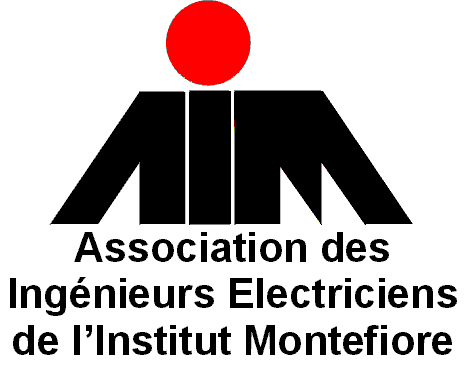
| 
|
From IP over ATM to MPLS (MultiProtocol Label Switching) May 5, 1999 - Brussels | 
|
|---|---|---|---|
|
André Danthine Université de Liège |

| 
|
From IP over ATM to MPLS (MultiProtocol Label Switching) May 5, 1999 - Brussels | 
|
|---|---|---|---|
|
André Danthine Université de Liège |
 Introduction
Introduction
 Table of Contents
Table of Contents
This initial view was in the logic of the Internet evolution. The IP layer must be able to use all the transport technologies in the local area (Ethernet, Token Ring, FDDI) as well as in the wide area (Leased lines, X25, ISDN, Frame Relay, T1, E1). ATM must not be an exception to this rule and this implies the introduction of servers, the use of ATM signalling inside the ATM subnet and IP routers at the edge of each subnet.
The idea of new services has been rejected by the community believing in the overprovisioning of the network resources to enable the "best effort" service of IP to support the "real-time" applications. Even if the concept of new services is accepted, the choice between a statistical approach and a firm guarantee remains to be made.
This proposal is aligned with the IETF model (Classical IP) but tries to correct its weakness by using routers based on an ATM switch partially managed by the IP layer with or without RSVP.
Between the connectionless vision of IP and the connection resulting from a signalling protocol, the first idea has been to introduce the concept of a flow. The flow is a stream of packets which must receive the same treatment in a sequence of routers. By assigning a label to a flow, it is possible to replace the routing by a label switching. This approach will not only improve the performance by reducing the processing load of the router but will also allow the enrichment of the routing functionalities.
This product attracted a lot of interest. Based on simple elements, it offered interesting performance but the initial lack of QoS support was a strategic error.
Facing the gigabit router development and the IP Switching, Cisco had to react rapidly. It is on a topological approach that Cisco has based its Tag Switching without rejecting the possibility of labelling application-based flows nor the use of RSVP. By not putting the label in an ATM environment, Cisco was able to generalise the concept and to separate the architectural principle from its implementation. The Tag Switching supports the multipoint, allows the aggregation of routes for the same destination and takes into account the hierachical routing by introducing the idea of a Tag Stack.
In the Tag Switching. it is from the ingress router that the labelling of the route will propagate. In ARIS (Aggregate Route-based IP Switching), the starting point is located at the egress router of an ATM subnet or of a LAN and the contruction of the labelled switching paths will propagate to the ingress router to build a mutipoint-to-point tree. Here also the explicit routes, the multipoint and RSVP are supported.
The interest in the label switching concept is confirmed by the related proposals introduced by other manufacturers.
Officially installed in the spring 1997 by the IETF, the Working Group on MPLS (Multi-Protocol Label Switching) had an initial objective to achieve the standardisation at the end of 1998. After the presentation of the main results already achieved, the today situation will be analysed with a discussion on the pending problems.
 Lecturer
LecturerIn 1983, Professor Danthine launched the ESPRIT I Project 73 aimed at the development of a high speed network for the interconnection of heterogeneous LANs on a broad site. This Project concluded, in 1989, with the installation, on the Sart Tilman Campus of the University of Liege, of the BWN (Backbone Wideband Network) prototype (more than 18 km of optical fibre with a data rate of 140 Mbps). In 1990, Prof. Danthine launched a new Esprit project, OSI95, to tackle the design of a new transport service and protocol (TPX) for multimedia applications in a high speed environment including B-ISDN. In 1991, he joined the RACE Project CIO. It is within the framework of this project that the ATM LAN of RUN has been connnected, at 34 Mbps, to the European ATM Pilot for functional and performance evaluations. Between 1994 and 1996, Prof. Danthine was also involved in another RACE project, ACCOPI. November 1995 marked the beginning of OKAPI, an ACTS project.
Since its creation in 1992, Prof. Danthine has been the chairman of the COST action 237 on "Multimedia Telecommunication Services".
He is often invited to present his vision of the evolution of the network architectures and of the information systems.
His tutorials on the hot topics of the network field are appreciated not only for the quality of the content but also for the provided insight.
Prof. Danthine is a member of ACM, of IEEE, of the Editorial Board of "ETT", of the Editorial Advisory Board of the Wiley Series in "Communication and Distributed Systems"; he is the editor of several books and proceedings and the author of more than a hundred papers. Chairman of the TC6 of IFIP from 1979 to 1985, he has been Governor of ICCC since 1982. CRB Fellow in 1960, he received the Melchior Salier Prize in 1961, the "Bell Telephone-100th Anniversary" prize in 1983 and the IFIP Silver Core in 1986. In 1993-1994, he was Francqui Professor at the VUB. He is Doctor of Science Honoris Causa of the University of Kent (1991), and of the University Paul Sabatier in Toulouse (1996).Since October 1997, he has been Professor Emeritus at the University of Liege.
|
Technical programme inquiries
Prof. André Danthine
Phone : + 32 4 366.26.90 |
Administrative Office
Mrs. Michèle Delville
Rue Saint Gilles, 31
Phone: + 32 4 222.29.46 |
|
Editor: -G. Leduc- Webmaster: -S. Calomme- |
CSS |
RUN |
Montefiore |
ULg © 1998-1999 Last Modified: Thu Jun 16 1999 |